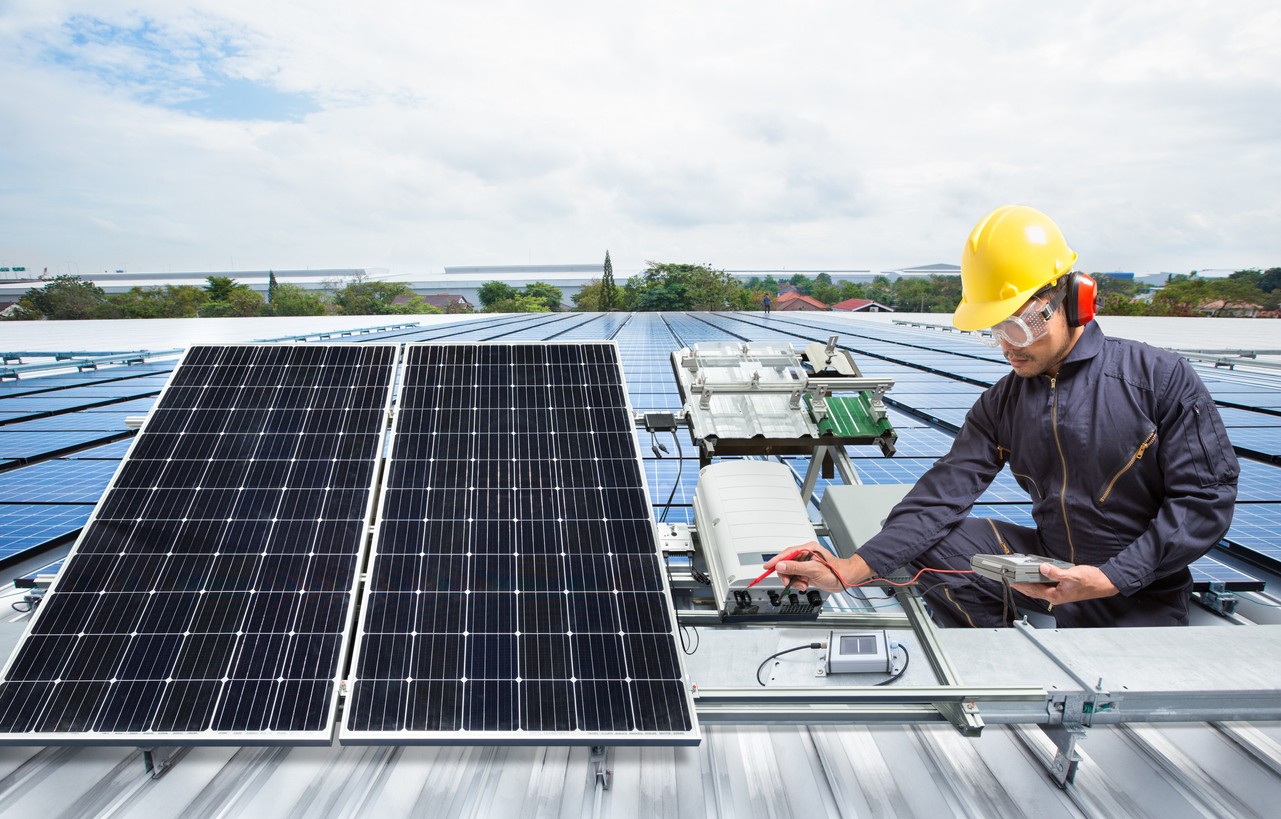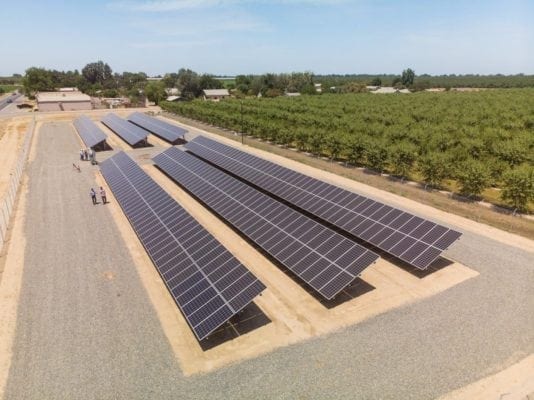
SAVE 75% ON YOUR SOLAR. CALL US TODAY!
Solar energy is one of the most eco-friendly solutions available to households, and it is rapidly gaining popularity. A solar panel encloses a collection of solar cells that are electrically connected and use sunlight to generate electricity.
Solar energy is the heat and light emitted by the sun. Several methods exist for utilizing the energy that the sun provides. Sunlight can be converted into power using photovoltaic cells, s. The solar thermal technique is when hot water or steam is produced using solar energy.
On December 15, 2022, the CPUC authorized a new net energy metering policy known as NEM 3.0. After the grandfathering period of 120 days, it is anticipated to go into effect on April 13, 2023. You must know that NEM 3.0 is not retroactive.
These new net metering rules only cover the homeowners who submit their solar applications after April 13, 2023. Before the implementation of NEM 3.0, homeowners who submit a finalized interconnection application will be grandfathered to NEM 2.0 for 20 years.
What is NEM?

The term “net energy metering” refers to a billing system for solar-equipped businesses, residences and utilities. Commercial solar owners who push extra electricity onto the grid while the sun is shining receive credit under net metering. The cost of the electricity they draw from the grid when the sun isn’t shining is mitigated by this credit.
One-to-one offsets have been the norm for net metering programs. In other words, the cost of a kWh of power removed from the grid was the same as that of a kWh of electricity exported to the grid.
A cheaper monthly payment on their solar equipment effectively replaces their utility company’s electricity bill for solar owners whose systems are designed to generate the same amount of electricity the home uses. This results in energy cost reductions of tens or hundreds of thousands of dollars over the solar system’s 25-year warranty life.
What is NEM 3.0?
NEM 3.0 is a policy passed by CPUC, and it is the new version of the net energy metering policy. It applies to utility consumers in the service areas of the three principal investor-owned utilities in the state of California:
- Southern California Edison
- Pacific Gas & Electric
- San Diego Gas & Electric
The fact that NEM 3.0 is not retroactive means that solar systems installed in accordance with NEM 1 or NEM 2 will continue to be covered by their current policy and not by NEM 3.0.
The value of export rates or excess electricity produced by solar systems has changed significantly between NEM 2.0 and NEM 3.0. Solar export rates under NEM 3.0 will be determined by the “Avoided Cost Calculator” rather than retail rates (what customers pay for electricity). In a moment, we’ll explain how it works.
The critical fact to be aware of is that export rates for NEM 3.0 are typically about 75% lower than those for NEM 2.0. If the export rate is long, the longer the payback period and reduced cost savings for solar power owners under the NEM 3.0.
Facts About NEM 3.0

- It significantly decreases the value of solar electricity’s net metering.
- There are no additional “solar taxes” or other fees.
- Under NEM 3.0, combining solar with battery storage will be more advantageous.
- Solar users can have a 20-year grandfathered entry into NEM 2.0 by submitting an interconnection application before April 13, 2023.
- Owners of solar energy systems that are grandfathered to the NEM 2.0 can later install battery storage and stay on NEM 2.0.
The shifting pricing structure that will lower the value of solar energy is the first and most important factor.
1. Reduced Solar Export Taxes
The rates at which solar owners are rewarded for the surplus electricity they supply to the grid represent the most significant difference between NEM 2.0 and NEM 3.0, also known as export rates.
Solar owners get credit for the total retail value of each kWh of electricity they send to the grid under most net metering regimes, which involves NEM 2.0.
Retail prices will no longer determine the value of solar exports under the NEM 3.0 proposal. Export rates vary by month and hour based on the “Avoided Cost Calculator.” The cost of exports is far lower than the cost of imports.
2. Zero New Solar Taxes
The new rate structure will significantly reduce solar savings and lengthen the payback period for switching to solar. Still, the version of NEM 3.0 accepted by the CPUC contains a glimmer of hope. The version of NEM 3.0 approved does not include a number of charges for solar owners, colloquially referred to as “solar taxes.”
Previously, the above taxes might raise the utility rates of solar owners by $60 per month. They’re no longer on the table.
3. An Effort to Combine Solar and Battery Power
The urge to combine solar and battery storage is a recurring theme in the NEM 3.0 document. It is because that peak solar production in California doesn’t coexist with the highest energy consumption. However, the problem is with using and storing electricity.
In fact, during September’s peak demand hours, the new export rates can reach as high as $3.32 per kWh. Under NEM 3.0, homes can use battery storage to store solar electricity produced during the day and transmit it to the grid at night, when export prices are at their greatest.
According to preliminary estimates of the NEM 3.0 concept, the solar and battery storage return on investment will be nearly equivalent to the solar alone. Given this, the case for combining solar and battery grows more substantial because you get the same return on investment AND the added advantages of having a battery backup for power interruptions.
4. 20-Year Duration of Grandfathering For NEM 2.0
The grandfathering period of 20 years for NEM 2.0 remained the same, another essential aspect of the NEM 3.0 decision. The NEM 2.0 grandfathering period was once thought to be reduced to ten years. Therefore, it is excellent news for solar owners that the grandfathering period will last 20 years.
Solar customers can continue to operate under the far more advantageous NEM 2.0 as long as they file a full interconnection application before NEM 3.0 takes effect on April 13, 2023.
According to a report of CALSSA, a good interconnection application consists of the following:
- Single Line Diagram
- Disclosure by the Contractors of the State License Board
- Signed contract (CSLB)
- Guide to consumer protection
- Over-sizing attestation (if appropriate and applicable)
Notably, to be grandfathered into NEM 2, you are not required to have a permit, complete an installation, or pass an inspection. Once the documentation is submitted and accurate, there is a three-year deadline to finish building the solar system.
You risk losing your NEM 2.0 status if you make system-size-increasing changes after NEM 3.0 goes into effect.
5. Customers of NEM 2.0 Can Later Add Battery Storage
The fact that NEM 2.0 can add battery storage in the future and still be considered NEM 2.0 is another crucial insight from the NEM 3.0 decision.
There are two situations where this is relevant:
- If you add battery storage after April 13, 2023, and already have a solar system in California, you won’t be upgraded to NEM 3.0.
- Adding battery storage afterward won’t affect your NEM 2.0 status if you were grandfathered into NEM 2.0 by filing an interconnection application for a solar system without a battery before April 13, 2023.
In California, combining solar and batteries has several benefits; thus, being able to do so while still operating under NEM 2.0 is advantageous.
6. The Perspective of Utilities
The utilities are in charge of giving all electric grid consumers access to dependable, secure, and reasonably priced electricity. They are worried about possible cost shifts from solar customers to non-solar consumers, particularly those low-income customers who cannot afford to adopt distributed energy resources like onsite solar and energy storage.
Additionally, utilities point to their plan as a perk for consumers who combine storage with their home solar system.
When will NEM 3.0 be Implemented?
On December 15, 2022, the CPUC passed NEM 3.0 unanimously. As a result, NEM 2.0 entered a 120-day sunset phase, allowing investor-owned utility customers until April 13, 2023, to submit interconnection papers and qualify for NEM 2.0 grandfathering.
When Did NEM 3.0 Pass?
NEM 3.0 was unanimously approved by the CPUC on December 15, 2022. The choice was made after a lengthy three-hour public commenting period that saw solid public opposition to NEM 3.0.
Learn More About NEM 3.0 from Coldwell Solar

Residential solar electricity export rates dropped by around 75% with NEM 3.0. Under NEM 3.0, low prices on energy export will reduce the overall savings and increase the period of payback for solar owners.
This significantly raises the value of combining solar power and battery storage. The return on investment for solar and battery under the new tariff structure is comparable to the previous practice where solar is used alone. Still, one shouldn’t take the advantages and independence of having a backup power source for granted.
If you to learn more about how NEM 3.0 affects you, contact Coldwell Solar.


